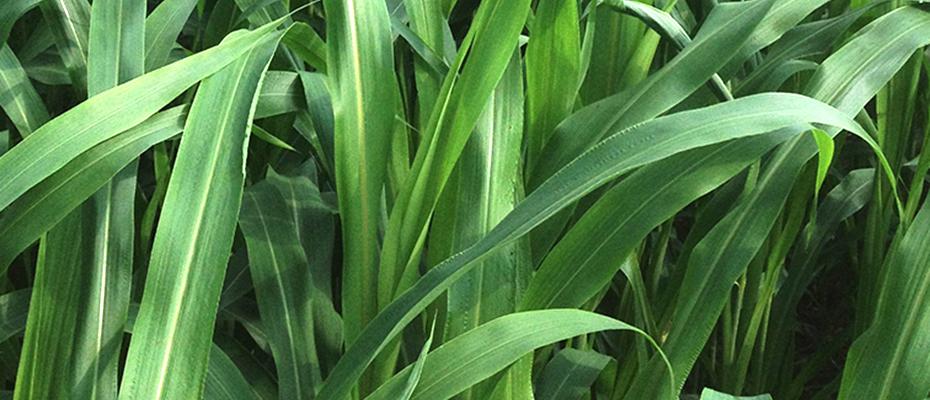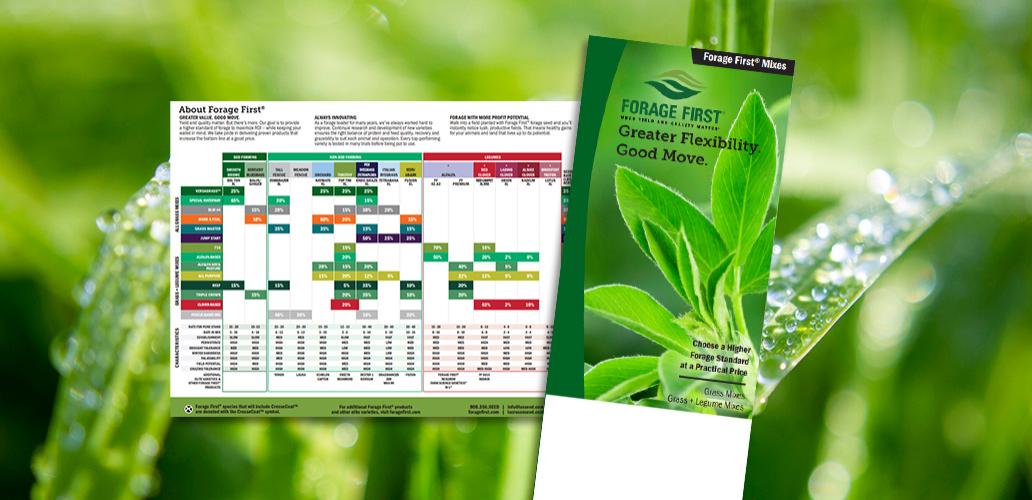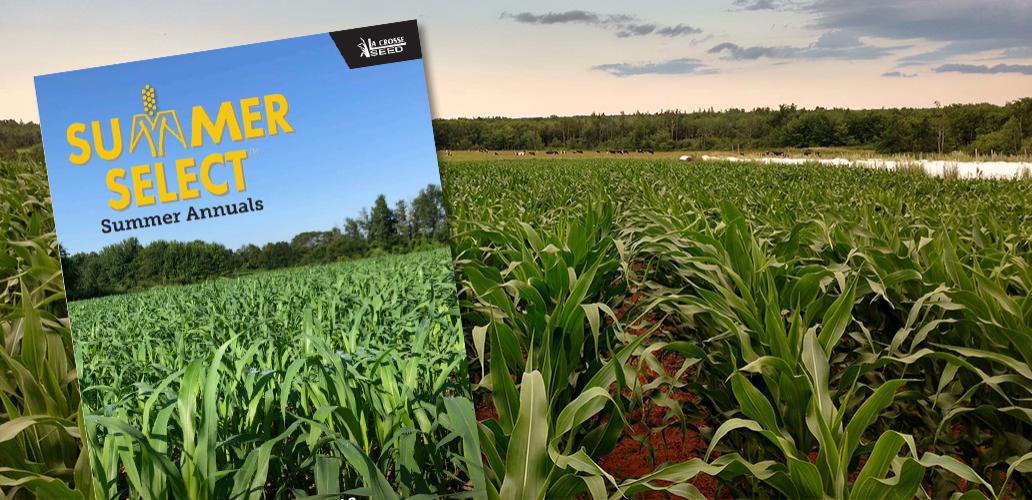Forage First Guide I Summer Select Guide
Greater Value. Good Move. Yield and quality matter. But there’s more. Our goal is to provide a higher standard for forage to maximize ROI– while keeping your wallet in mind. We take pride in delivering proven products that increase the bottom line at a good price.

CHARACTERISTICS:
1 = Poor; 5 = Excellent
Recovery After Cutting: 3
Leaf Disease Resistance: 3
Sugarcane Aphid Tolerance: 1
Single Silage Cut Suitability: 2
Rapid Dry Down: 4
Uses:
- Grazing – Recommended beginning height is 18-24 in. with a stop height of 6-8 in. (or at least 2 nodes remaining)
- Hay/Baleage – more suitable than sorghum x sudangrass for dry hay – optimal timing is 40 days or 40 in.
- Dense stands offer multiple cover crop advantages – from weed suppression to nematode control
- Emergency hay or pasture option
SEEDING:
Planting Time:
May-July
Emergence (days): 10
Seeding Information:
Seeds/lb.: 35-40,000
Soil Temperature: 60 F
Depth (in.): 3/4 – 1 1/2
Maturity: Early Med
Dryland Seeding (lbs./acre): 15-25
Irrigation/Hi-Rain Seeding (lbs./acre): 20-35
- Can be no-tilled into the stubble of winter and spring crops
MANAGEMENT:
Fertility:
- Under favorable conditions, 1-1.25 lbs. of nitrogen/day of planned growth should be available for ultimate growth, with little risk for nitrate poisoning. For example, for a planned 40 day harvest, 40-45 lbs. of N should be available.
- Fertility requirements are similar to those of corn silage
Harvest & Management Tips:
- Dry hay and/or baleage are applicable where and when proper harvest management is followed. Dry hay is suited for areas with less moisture and humidity; baleage offers more flexibility in all other areas.
- Harvest at proper moisture (yield and quality are maximized between 60-72%)
- Wide windows are required for baleage products to ensure rapid dry down
- For silage, keep chop length uniform (around 1/2 in.)
Avoiding Nitrate & Prussic Acid Poisoning:
- Do not harvest drought stricken plants within four days following a heavy rain
- Do not apply N prior to expected drought periods
- If in doubt, cut at higher stubble height as nitrates tend to accumulate in the lower stalk
- If high prussic acid is found, wait one month prior to feeding. Unlike excessive nitrates, prussic acid will escape from the plant over time.
- When questions about livestock safety remain, get forage tested promptly
Ratings
Scale 1-9, where 9 = best or most pronounced
SC Aphid Tolerance
Disease Resistance
Cutting Recovery
- Best summer annual option when dry hay production is planned
- Strong emergence & quick regrowth
- Rapid growth & regrowth (faster than sorghum x sudangrass)
- Lower prussic acid risk than sorghum
- Tolerates poor fertility and low pH

.png)
.png)


.png)










